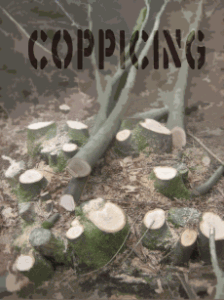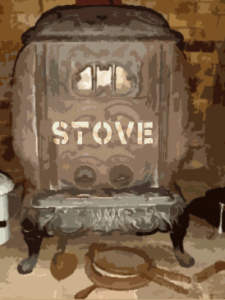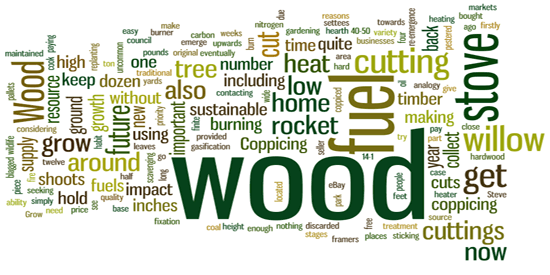This piece is really for people who heat their homes using fire, if you have a wood burning stove, a cooking range, a traditional hearth or rocket stove mass heater, or are you considering making or buying any of the above, then where you get your wood for fuel is high up the priority lost for a number of reasons, firstly trying to get hold of a supply of wood that is from a sustainable source is important, so too is the price that you could end up paying for your wood.
Grow your own fuel
 About 7 years ago I bought a dozen willow cuttings from a seller on eBay for three pounds; the cutting have now quadrupled in number due to coppicing the original dozen into further cuttings and replanting them. I now have around 40-50 willow trees at various stages of growth, during the time that I have had them they have provided me with fuel for my allotment rocket stove, and fuel for the wood burner at home. Willow cuttings are very easy to grow, simply make sure that the tiny shoots are pointing upwards when you stick the cutting in the ground, if your cutting is twelve inches long about four inches of it will need to be inserted into the soil. Within two weeks of sticking your willow cutting in the ground you will see leaves beginning to form.It is not uncommon for willow to grow around 14-1 feet in height in their first year of growth.
About 7 years ago I bought a dozen willow cuttings from a seller on eBay for three pounds; the cutting have now quadrupled in number due to coppicing the original dozen into further cuttings and replanting them. I now have around 40-50 willow trees at various stages of growth, during the time that I have had them they have provided me with fuel for my allotment rocket stove, and fuel for the wood burner at home. Willow cuttings are very easy to grow, simply make sure that the tiny shoots are pointing upwards when you stick the cutting in the ground, if your cutting is twelve inches long about four inches of it will need to be inserted into the soil. Within two weeks of sticking your willow cutting in the ground you will see leaves beginning to form.It is not uncommon for willow to grow around 14-1 feet in height in their first year of growth.
Coppicing
 Coppicing fuel is a very low impact and sustainable way of using wood as a renewable resource, with coppicing; to coin gardening analogy is where you cut a try ‘hard back’ in other words you cut the tree quite low to its base. The coppiced tree will grow back stronger and will put out new shoots which eventually form part of the new bigger tree that will emerge.
Coppicing fuel is a very low impact and sustainable way of using wood as a renewable resource, with coppicing; to coin gardening analogy is where you cut a try ‘hard back’ in other words you cut the tree quite low to its base. The coppiced tree will grow back stronger and will put out new shoots which eventually form part of the new bigger tree that will emerge.
Wood scavenging
During the time that we have had our wood burning stove heating our home we have managed to get hold of wood for the stove from a wide variety of sources: including rubbish skips, pallets from the markets, discarded in alleyways. and I also pestered and blagged some council workers last year who give me around half a ton of rough cut logs from a job they had been doing in the park which is some twenty yards away from where we live. We are quite fortunate in having a small furniture manufacturers close by where we go and collect the timber off cuts that are by product of making settees, the wood that we collect is free from any treatment agents and chemicals, some of it is hardwood, and some pine. In the past we have also collected off cuts of timber from a picture framers workshop within our local area. Something to keep in mind, many businesses have to pay to dispose of wood that is clean enough to heat your home for nothing; it is worth seeking out these places and contacting them.
The future of wood fuel
 Wood as a fuel can be easily grown and maintained without harming the ecology of where it is located. Wood is not a finite resource as is the case with coal oil and gas. With the re-emergence of rocket stove technology and wood gasification and their ability to get a maximized high quality burn and heat supply, wood is now more important than ever as one of the fuels of the future. There are also other benefits of growing wood as a fuel, including: wildlife habit creation, nitrogen fixation, and carbon storage. Wood is without a doubt one of the fuels that will keep us warm and cook for us as we move towards a low impact future.
Wood as a fuel can be easily grown and maintained without harming the ecology of where it is located. Wood is not a finite resource as is the case with coal oil and gas. With the re-emergence of rocket stove technology and wood gasification and their ability to get a maximized high quality burn and heat supply, wood is now more important than ever as one of the fuels of the future. There are also other benefits of growing wood as a fuel, including: wildlife habit creation, nitrogen fixation, and carbon storage. Wood is without a doubt one of the fuels that will keep us warm and cook for us as we move towards a low impact future.
Steve


First use the coppice as foodder for goats and sheeps. They will eat the leavs and bark. The wood will be very dry and perfect as firewood.